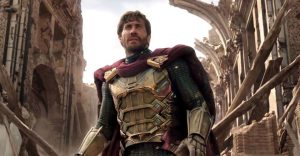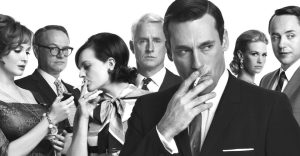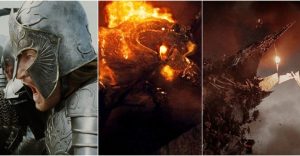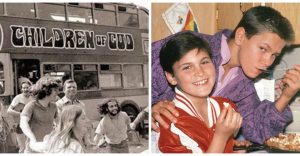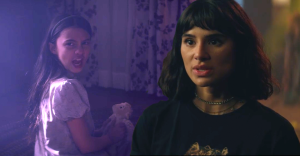Jurassic Park: 5 Ways The Opening Scene Is Perfect (& 5 The Ending Is)

Just under two decades after Steven Spielberg broke the record for the highest-grossing film ever made with one monster movie, he did it again with an acclaimed adaptation of Michael Crichton’s sci-fi bestseller Jurassic Park. The movie is a Frankenstein story with themes about the hubris of humanity and the dangers of playing God, but it also has plenty of popcorn thrills along the way.
Any great movie is bound to have the perfect opening scene to get audiences hooked on the story right away and the perfect ending that wraps everything up in a neat bow. As one of the greatest movies ever made, Jurassic Park has both.
10 Opening: It’s Shrouded In Mystery

The opening scene of Jurassic Park doesn’t introduce any of the main protagonists or even explain what the park is. Everything is shrouded in mystery as a large cage is transferred by a bunch of workers hanging in suspense.
The job of a movie’s opening scene isn’t to set up the characters and the premise right away. All it has to do is get the audience on the edge of their seats, wanting to know more, and that’s what Jurassic Park’s first scene does.
9 Opening: It Establishes That The Park Is A Bad Idea

Throughout Jurassic Park, Spielberg makes it abundantly clear that a dinosaur-infested theme park is a terrible idea, despite how cool it may sound. This is established in the opening scene as a dinosaur handler is brutally killed by a velociraptor.
John Hammond can’t see it because he’s blinded by his own ego, but all the other characters — and the audience — can see that filling an island with live dinosaurs for tourism is a bad idea.
8 Opening: Unseen Monsters Are Always More Terrifying

Spielberg first made his name with Jaws, another monster movie with a Hitchcockian command of suspense. One of that movie’s greatest strengths was the shark’s limited screen time. In the whole two-hour movie, the shark only appears on-screen for collectively about four minutes.
This technique was fiercely effective because unseen monsters that force the audience to use their imagination are always more terrifying. Spielberg reused this technique in Jurassic Park’s opening scene, which depicts a killing by a velociraptor without actually showing the raptor.
7 Opening: It Immediately Introduces The Danger Posed By The Dinosaurs

The opening scene of Jurassic Park immediately introduces the danger posed by the dinosaurs as one of them manages to kill an InGen employee while still confined to its cage.
Spielberg doesn’t change gears into full-on dino action until the midpoint when the T. rex escapes, but the opening scene instantly establishes the awesome power of Hammond’s cloned prehistoric attractions.
6 Opening: The Nighttime Setting Makes It Much Creepier

A cage containing a velociraptor being moved around by some handlers who quickly find themselves under attack is already a terrifying scenario on its own.
But setting that scenario in the dead of night makes the opening of Jurassic Park much creepier than if it was set in the middle of the day.
5 Ending: The Happy Ending Feels Earned

Like most of Spielberg’s movies, Jurassic Park has a happy ending. The only characters who get viciously killed by the dinosaurs are the sleazeballs who deserve it, like the corner-cutting lawyer trying to save John Hammond’s deadly business venture.
But after everything they’ve been through, from Dr. Malcolm using a flare to draw a T. rex away from the kids to Dr. Sattler fleeing from raptors on her way to turn on the backup power generator, that happy ending feels completely earned.
4 Ending: John Hammond Realizes The Error Of His Ways

At the end of Jurassic Park, as the survivors flee from the visitor center and hop into John Hammond’s car to get off the island as quickly as possible, Dr. Grant quips, “Mr. Hammond, after careful consideration, I’ve decided not to endorse your park.”
Hammond simply replies, “So have I.” After his Frankenstein-adjacent experimentations put his grandchildren’s lives in danger, he realized the error of his ways.
3 Ending: Life Finds A Way

When Hammond and his team of scientists assure Ian Malcolm that they have their dinosaur attractions under control, Malcolm warns them, “Life, uh… uh… finds a way.”
This is proven in the movie’s finale when Dr. Grant is being chased by a T. rex and Dr. Sattler is being chased by velociraptors and the T. rex and the raptors end up fighting each other. This climactic brawl suggests that, no matter how badly humanity messes up, nature will figure it out.
2 Ending: Dr. Grant Has Warmed To The Kids

Dr. Grant’s emotional arc in Jurassic Park has nothing to do with the dinosaurs themselves. At the beginning of the movie, as he tells an arrogant little kid what a bloodthirsty raptor would do to him, it’s established that Grant doesn’t have much patience for children.
He’s forced to change after he becomes the sole guardian of John Hammond’s grandkids when they’re stranded in the park. By the end of the movie, as he sits on the helicopter with Lex and Tim, smiling at a family of birds flying alongside them, he’s clearly warmed to them.
1 Ending: It Wraps Up The Movie’s Themes

The message in Jurassic Park is that playing God is wrong and nature is much bigger than humankind, so humanity’s hubris-driven efforts to alter nature will always fail miserably.
These themes are wrapped up perfectly in the movie’s final scene. Even Hammond himself comes to agree with the sentiment. Jurassic Park’s final scene tied everything up in a neat bow, so there was no need for a sequel. Of course, since it became the highest-grossing movie of all time, there was a sequel, and a couple more after that.
About The Author













